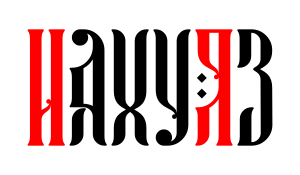Have you ever noticed that when there’s a choice between a few different words meaning more or less the same thing, non-native speakers almost always pick the one that sounds completely wrong? My choice of words in English regularly makes my American friends and students burst out laughing. And my students? They do exactly the same thing back to me in Russian – they know three different words for something and somehow always pick the one that makes me wince.
I actually tell them this is a good sign. It means their vocabulary is growing beyond the safety of beginner phrases. They’re ready to sound sophisticated… they just need to learn when to use their new tools.
The Deceptively Simple Word ‘Same’
My students constantly get tangled up with Russian words for ‘same.’ On the surface, this should be easy, right? ‘Same’ is basic vocabulary – not some complex philosophical concept that requires a PhD to understand. Every beginner needs it early on.
But here’s the thing: Russian has at least five different ways to say ‘same,’ and each one fits only specific contexts. Choose wrong, and you sound like you’re translating word-by-word from Google Translate.
Here’s the dirty little secret about language learning that nobody tells you upfront: there’s no neat one-to-one correspondence between languages. Inexperienced learners think each word in their mother tongue has a perfect twin in their target language – it just sounds weird and might be spelled with those awkward Cyrillic letters. All you need to do is memorize which strange combination of sounds matches what English word, right?
Wrong. Languages absolutely don’t work like that.
Take a Simple Brick, for Example
Let’s look at something as basic as a brick. What could be simpler than a rectangular block of fired clay? Well, according to Wiktionary, English ‘brick’ has thirteen different meanings – from that rectangular building block to a reliable person (“he’s a brick!”) to a broken electronic device (“my phone’s completely bricked”).
The Russian word кирпич has only four meanings. Some overlap with English, but Russians also use it for something uniquely theirs: a rectangular loaf of bread.

See what happened there? English speakers focus on a brick’s hardness – its ability to stay solid and reliable. Russians focus on its rectangular shape and build meanings from there. This is one of the most fascinating things about being a polyglot: watching how different languages carve up reality in completely different ways.
The Five Faces of Russian ‘Same’
So let’s dive into Russian’s five ways to say ‘same’: одинаковый, такой же, тот же самый, один и тот же, and один. In different contexts, only one or two will sound natural.
одинаковый – The Clone Army
Одинаковый is for things that are identical, indistinguishable, mass-produced. Think of a row of identical soldiers or a bunch of factory-made widgets.
Все ученики носят одинаковую форму. – All students wear the same uniform.
Все современные автомобили одинаковые, не отличишь, где японская машина, а где американская. – All modern cars are the same – you can’t tell a Japanese car from an American one.
такой же – The Comparison Game
When you’re comparing one thing to another – when you have a reference point – you need такой же. This always comes with как (as/like) because you’re making a direct comparison.
У меня такой же телефон, как у тебя. – My phone is the same as yours.
У тебя такие же глаза, как у твоей мамы. – You have the same eyes as your mother.
тот же самый – The Very Same Thing
Sometimes English ‘same’ means not just similar, but literally the same object. Russian adds самый (very) to emphasize this: тот же самый (that very same).
Сегодня он надел те же самые джинсы, что и вчера. – Today he wore the same jeans as yesterday.
This doesn’t mean the same brand or style – it means the exact same pair of jeans, possibly still unwashed from yesterday.
один и тот же – The Broken Record
For repetitive sameness – the same song on repeat, the same movie for the hundredth time – Russian uses один и тот же.
Мне надоело есть один и тот же суп каждый день! – I’m tired of eating the same soup every day!
Почему ты всегда читаешь одну и ту же книгу? – Why do you always read the same book?
один – The Shared Experience
Finally, when ‘same’ refers to shared characteristics or experiences between people or objects, Russian uses simply один.
Мы учились в одной школе. – We went to the same school.
Они были одного роста и одного возраста. – They were the same height and the same age.
See It All in Action: A Dystopian Nightmare
Here’s a short text I wrote specifically to show all these ‘same’ words working together:
В дистопии все люди носят одинаковую форму, едят одну и ту же еду каждый день, выполняют одну и ту же работу и не мечтают о лучшей жизни. На входе в дом тебя встречает тот же самый вахтёр, что и десять лет назад. А может, и другой – но он выглядит так же, как предыдущий. Ты знаешь, что у твоего соседа такая же квартира, как у тебя, там стоит такая же мебель. Все вокруг слушают одни песни и смотрят одни фильмы. Так выглядит ад.
In a dystopia, everyone wears the same uniform, eats the same food every day, does the same job, and doesn’t dream of a better life. At the entrance to your building, you’re greeted by the same doorman as ten years ago. Or maybe it’s a different one – but he looks just like the previous one. You know that your neighbor has the same apartment as you, with the same furniture. Everyone around listens to the same songs and watches the same movies. This is what hell looks like.
Let’s break it down:
- The uniform is одинаковая – mass-produced identical items
- The food and job are одну и ту же – mind-numbing repetition day after day
- The doorman is тот же самый – we suspect it’s literally the same person
- The apartment is такая же – direct comparison with a reference point
- The music and movies use одни – shared cultural sameness
The Bottom Line
Don’t worry if you’re still confused. Most of these can be interchangeable in some contexts, and Russian always gives you multiple ways to express the same idea. But understanding these distinctions will help you sound less like a textbook and more like a human being.
And if you’re still confused? Don’t worry – I’ve prepared a cheat sheet specifically for you that guides you through the decision-making process and explains these differences in detail. Because sometimes you need a roadmap when you’re ready for the next level of sophistication.

